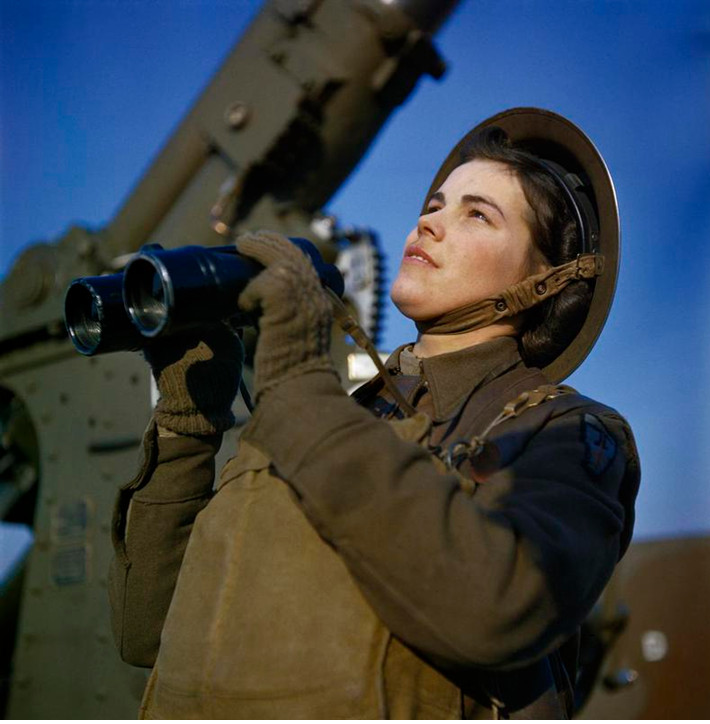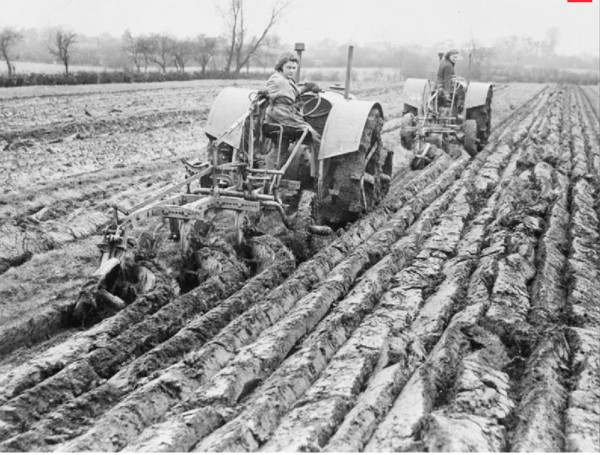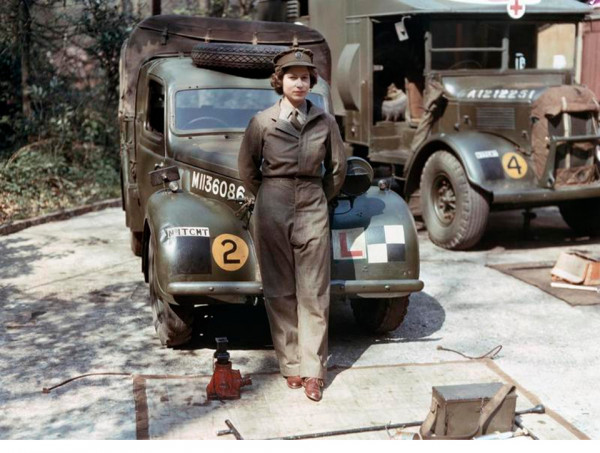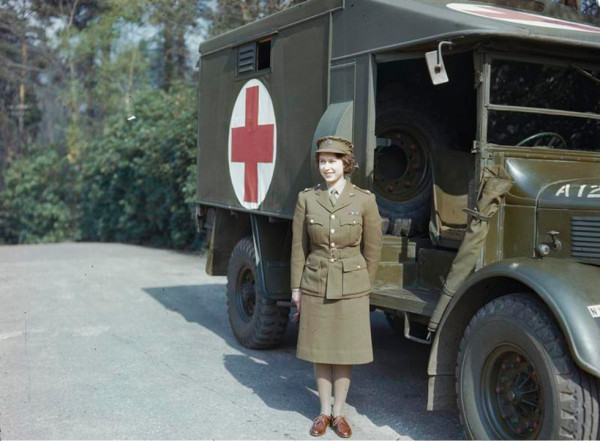Compulsory female service in combat units is more typical of totalitarian societies!

In the Second World War, no woman conscripted into the British army was awarded a medal for bravery on the battlefield. Was this discrimination?
On July 8, Neatkarīgā published Bens Latkovskis' opinion piece "Are women being ‘discriminated’ against by not making their enlistment compulsory?" In his article, Bens Latkovskis tried to find an answer to the question of why women's service in future Latvia could only be voluntary.
There were people quoted by Bens Latkovskis who strongly opposed the rule that women could be exempt from compulsory military service. When asked what effect the presence of members of the opposite sex had on the fighting ability of certain army units, Bens Latkovskis replied that in Israel, where women of a certain age (there are exceptions) are obliged to serve in the army, "the presence of both sexes together does not have a disruptive effect on army discipline".
Ben Latkovskis’ article is more about the biological difference between the sexes, but I think the answer to the question of whether a woman can be ordered to kill (her opponent) is not in biology, but in ideologies and beliefs. Conservative societies (meaning not backwardness but a set of beliefs traditional to Christian civilization) are based on the principle that women are the ones who directly create life (give birth to children) through immense pain, so it is immoral to order them to take someone's life. Therefore, the compulsory or even voluntary participation of women in combat units was more typical of cultures that were different from traditional Christianity or modernized.
In this respect, it is worth looking at the experience of the Second World War. In the USSR - the Red Army - women could voluntarily join combat units. There were women snipers in the Red Army with distinguished decorations, women fighter pilots, etc. In Hitler's Germany, men had to fight, but the role of women was family and work on the home front. That is why it is important to look at the British example. A democratic country where over a million women were conscripted (or volunteered for the British army). Yet throughout the Second World War (1939-1945), not a single woman conscripted into the British army was awarded for bravery on the battlefield. Was this discrimination?
Why did it happen? In the USSR, millions of women received decorations for fighting.
The emancipation of women in Britain was very slow. Until the First World War, it was normal for an unmarried, poor woman to work in a factory at the workbench. During the First World War, millions of British men were conscripted into the army and the need for working-class women in factories grew. During the First World War, women's auxiliaries were created in Britain, but they looked more like an aristocratic female amusement than a supplement to the army. There was an exception. From the late 19th century, women in the British Army could be both nurses and orderlies on a voluntary basis. During the Second World War, women with a medical background could join the Voluntary Aid Detachment (VAD) on a voluntary basis. Unlike the Red Army, female medical personnel in the British Army were forbidden to provide first aid in combat positions. It was a man's job. In the Red Army, female medics evacuated the wounded from battle positions. In the British Army, this was forbidden.

In the early 20th century, the career ceiling for young women was to be a typist until marriage and a housewife after marriage. So, until 1939, a woman's role in English society was roughly defined as being a good wife and looking after the children while their husbands endured the hardships of war.
However, the Second World War forced a radical change in this concept. First, it was in the civilian sphere. Already in 1942, British women had to replace 1.5 million conscripts and 0.8 million men employed in the military industry to keep the economy running. The changes of war meant that women had to learn jobs that were typically done by men. First women had to replace men in factories. The propaganda slogan "A married woman belongs in the factory!" was put forward. Across Britain, between 1938 and 1945, the proportion of women employed in factories rose from 17% to 27%. Wartime opened up the engineering profession to women, which had previously been a totally male-dominated profession. Married women were encouraged to work in factories, offering a four-hour working day. Kindergartens were set up to encourage married women to work. Women from the middle class had to be given decent working conditions in the factories, and this contributed to the improvement of working conditions in the industry.
Contrary to the Marxist dogma that a fifteen-year-old weaver in a textile mill was a sign of greedy exploitation, this decision was interpreted in British society as a move dictated by patriotism.
However, even in the most difficult of times, compulsory service in Britain was not extended to married women.
At the outbreak of war, women's service in the army (or labor service) was voluntary. Any woman aged 17-43 (married or single) could volunteer. In 1941, the 80,000-strong Women's Royal Naval Service (WRNS) was formed on a voluntary basis. However, the navy employed women only in the shore services. Women were not included in the naval units. 185,000 women volunteered for service in the Women's Auxiliary Air Force (WAFF). Women were never trained or included in fighter pilot groups. Women in the WAFF were radio operators, worked in the preparation and decoding departments of aerial photography companies and performed other backup duties. In civil and postal aviation, women were given the opportunity to train as transport pilots.
Other Allied armies had no such prohibitions. In the USA and the USSR, for example, women (volunteers) could be pilots in military aviation.
In the UK, women were also admitted to the auxiliary fire, police and civil protection forces. There was no problem in recruiting women and mixed troupes for concerts for those employed in the army and military industry, the so-called Entertainments National Service Association (ENSA).
There was great difficulty in recruiting the Women's Land Army (WLA) to replace the men conscripted into the army who were previously employed in agriculture and logging.
Women in this service had to learn all agricultural and logging tasks. Women on tractors were not a Soviet invention, but a regular British Second World War thing.

However, by the end of 1941, there were already 100,000 women short of the full complement of the Auxiliary Territorial Service (ATS). The 1941 National Service Act made all unmarried women aged between 20 and 30 eligible for the Auxiliary Service. Conscripts had to choose between service in the ATS, assignment to the war industry or service in civil defense. The problems of recruiting women to the auxiliary forces continued throughout the war, and even the royal family got involved. From the age of 16, Princess Elizabeth, the future Queen Elizabeth, performed the duties of the monarchy, presented decorations, etc. In February 1945, Princess Elizabeth volunteered (at the age of 18) to join the auxiliary forces of the army in order to encourage other women to join the ATS by her example. During her service, Princess Elizabeth trained as a driver-mechanic and graduated from Officer Training School with the rank of Captain.

However, even in the worst year of the war (1943), half of all British women of working age remained housewives. (Stephen Broadberry, Peter Howlett BLOOD, SWEAT AND TEARS: BRITISH MOBILISATION FOR WORLD WAR II//Chickering, R. and Förster, S. (eds.), A World at Total War: Global Conflict and the Politics of Destruction, 1939-1945, Cambridge: Cambridge University Press)
Women in the auxiliary forces had a double subordination. The immediate commander was always a female officer of the auxiliary forces
So why did no women conscripts in the British army in the Second World War receive an award for bravery on the battlefield?
British society believed that a woman should not be ordered to shoot (kill) an enemy. The personal weapons of women conscripts were for self-defence, not offence.
The only exception was the female and mixed crews in British air defense units in the auxiliary ground forces. In the mixed crews, women determined the target range, operated the searchlight to illuminate German bombers, etc.
***
Acknowledgements
Imperial War Museums for the opportunity to work with the digital collection of images and documents
*****
Be the first to read interesting news from Latvia and the world by joining our Telegram and Signal channels.